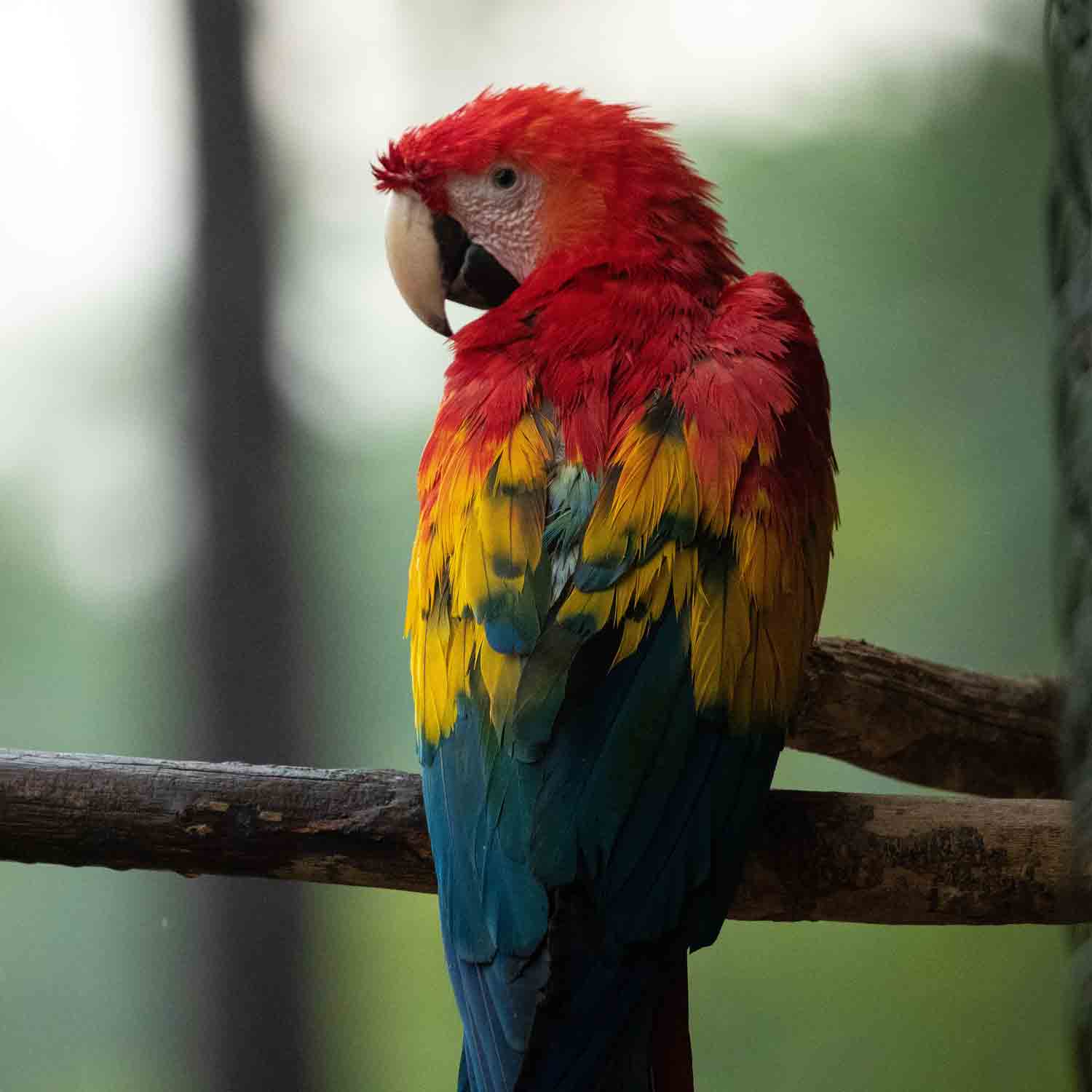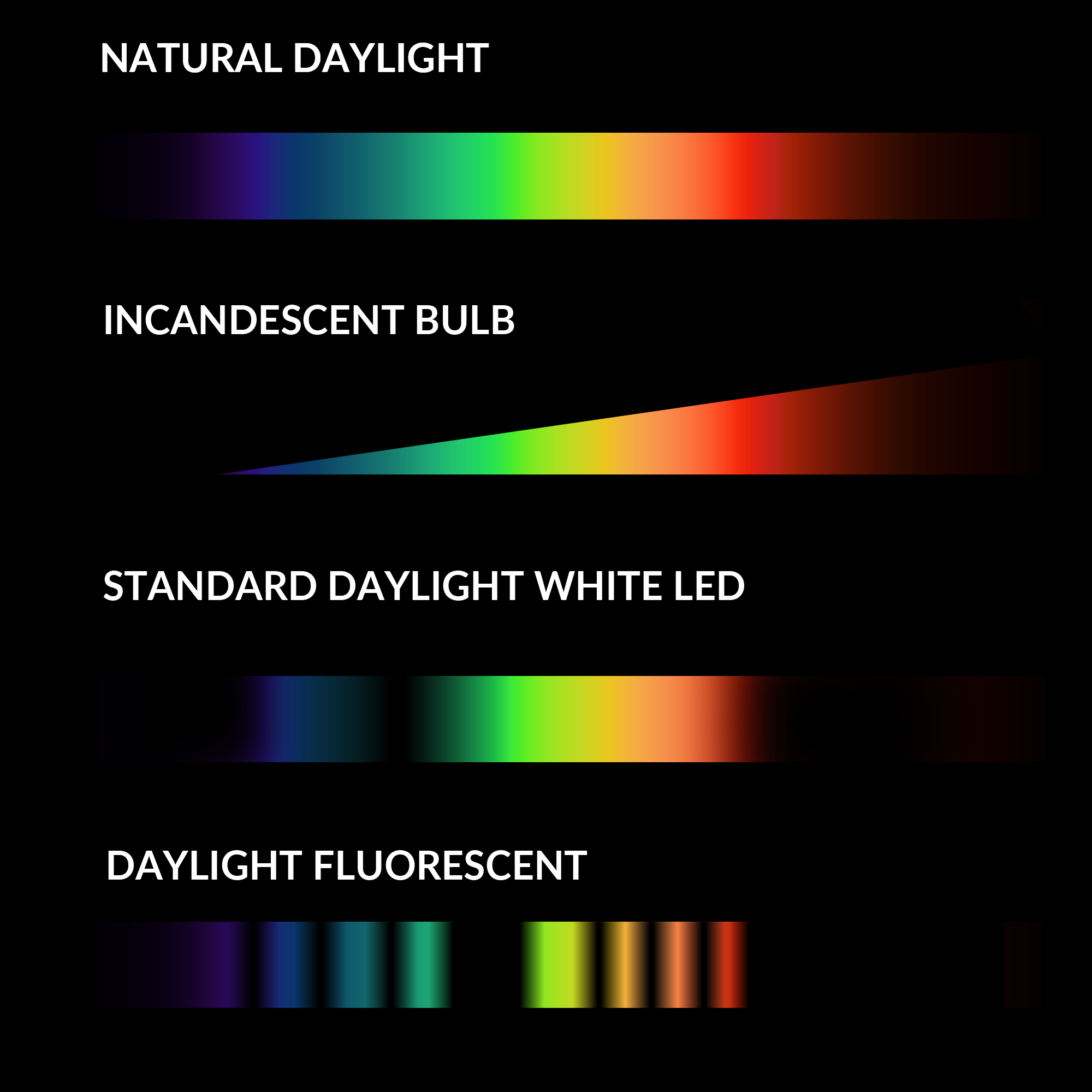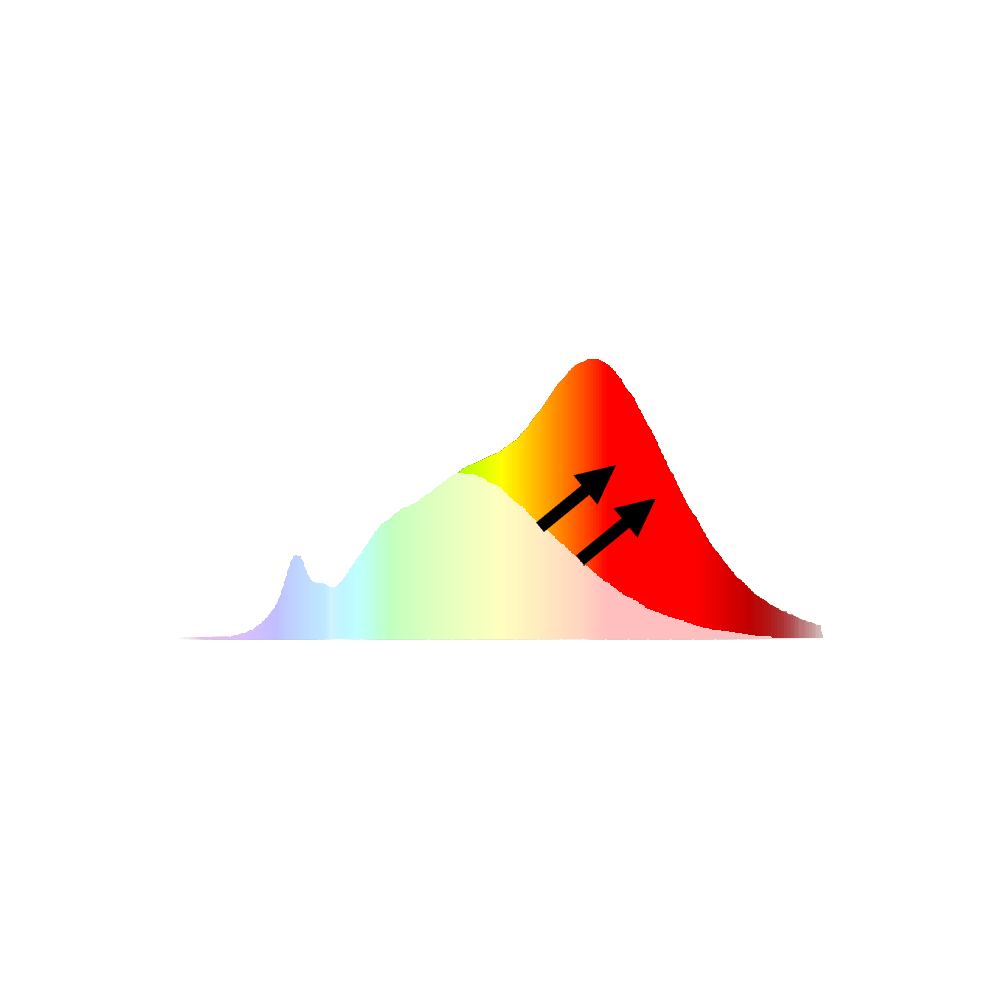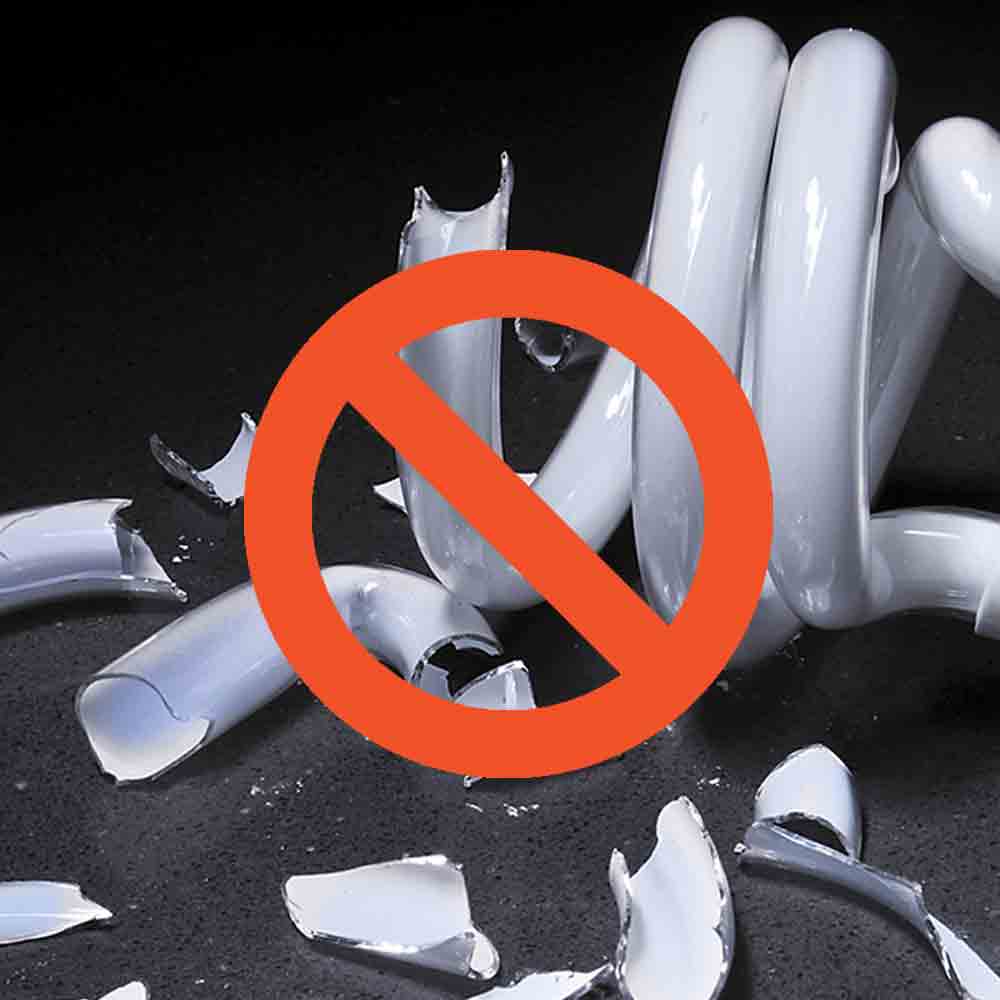
More than just for seeing
Like humans, birds are complex animals that depend on lighting to regulate and signal various biological processes. Despite our best intentions, pet birds oftentimes receive insufficient light, or the wrong type of lighting, which can be detrimental to their health.
The majority of artificial lighting is designed by profit-seeking businesses that strive to produce as much perceived brightness as possible using as little electricity and manufacturing cost as possible. As a result, light quality, whether measured through CRI or spectrum analysis, is almost never a priority.
But, if we reconsider lighting to be more than just a tool that facilitates human vision, but an essential component and building block for avian health, taking a serious look at high quality full spectrum lighting is absolutely critical.


More than just for seeing
Like humans, birds are complex animals that depend on lighting to regulate and signal various biological processes. Despite our best intentions, pet birds oftentimes receive insufficient light, or the wrong type of lighting, which can be detrimental to their health.
The majority of artificial lighting is designed by profit-seeking businesses that strive to produce as much perceived brightness as possible using as little electricity and manufacturing cost as possible. As a result, light quality, whether measured through CRI or spectrum analysis, is almost never a priority.
But, if we reconsider lighting to be more than just a tool that facilitates human vision, but an essential component and building block for avian health, taking a serious look at high quality full spectrum lighting is absolutely critical.

What constitutes full spectrum light?
Natural daylight, quite intuitively, is considered to be the best and optimal lighting for pet birds. The term "full spectrum lighting," however, is commonly used by manufacturers to invoke associations to natural daylight, without a rigorous scientific analysis and basis.
Traditional light sources have failed to achieve what we believe are the three basic requirements for a light source to qualify as full spectrum:
- Continuous spectral energy across the entirety of the visible spectrum, defined as 400 nm to 800 nm
- Balanced spectral energy, where energy levels at all wavelengths are equal or very similar
- A Color Rendering Index (CRI Ra) value of 95 or greater, with an R9 value of 80 or greater
Specifically, each of the traditional lighting technologies faces the following deficiencies:
- Incandescent light sources provide continuous spectral energy, but the resulting spectral energy is very unbalanced, with a strong bias towards yellows, oranges and reds.
- Standard LED bulbs do not have continuous spectral energy, with deficiencies in violets, cyans and deep reds.
- Fluorescent bulbs also do not have continuous spectral energy, with narrow bands or peaks of energy instead of a smooth, balanced spectrum.
At Waveform Lighting, we tirelessly pursue LED lighting technologies that enable light output with spectral qualities that approximate natural daylight. As a result, we are able to offer what are the industry's first truly full spectrum LED lighting products.
CRI - a useful metric to measure full spectrum
The Color Rendering Index (CRI) measures the ability of a light source to bring out the true colors of an object. But what's really going on here? It is the spectral qualities of a light source that determine its color rendering abilities. Full spectrum light sources, by virtue of being similar to natural daylight, must have a very high CRI to be considered a true, full spectrum light source.
Waveform Lighting's ABSOLUTE SERIES™ LED lamps have up to 99 CRI (Ra). This means that our lights are virtually indistinguishable from daylight.
More on CRI →Compare our CRI R values to other light sources by clicking the corresponding buttons below.
- Score:
- 25
- 50
- 75
- 100

How we achieve full spectrum
LED phosphors are the technological advancement in LED lighting technologies that makes full spectrum lighting possible.
Phosphors convert light energy of one wavelength and redistribute that energy as a different wavelength. For example, a red phosphor will convert blue light energy, and re-emit red wavelength energy.
By carefully adjusting the amount of various colored LED phosphor in an LED chip, an unprecedented level of spectral control becomes possible. Because LED phosphors are in powder form, they can be readily mixed into various color recipes with changes in phosphor ratio resulting in subtle color differences.

Our carefully developed phosphor recipes are the secret sauce to achieving a full spectrum result that truly mimics natural daylight.
No hazardous materials
All fluorescent lamps use mercury vapor to emit light. Any breakage or leakage can cause the mercury to contaminate the area, creating a health hazard for both humans and birds.
Our LED lamps use no hazard materials or chemicals during manufacture. The light emitting "chips" are non-toxic, non-volatile semiconductor devices encased in plastic, that pass stringent hazardous materials testing regulations, including RoHS. The lamp body is made of aluminum or glass, with an extremely durable polycarbonate plastic cover. You no longer need to worry about how and where to evacuate your birds in case there is a broken bulb.


No hazardous materials
All fluorescent lamps use mercury vapor to emit light. Any breakage or leakage can cause the mercury to contaminate the area, creating a health hazard for both humans and birds.
Our LED lamps use no hazard materials or chemicals during manufacture. The light emitting "chips" are non-toxic, non-volatile semiconductor devices encased in plastic, that pass stringent hazardous materials testing regulations, including RoHS. The lamp body is made of aluminum or glass, with an extremely durable polycarbonate plastic cover. You no longer need to worry about how and where to evacuate your birds in case there is a broken bulb.
Avian Full Spectrum LED Products
$29.00
Avian Full Spectrum E26 BR30 LED Bulb for Birds
$19.00
Avian Full Spectrum E26 A19 LED Bulb for Birds
Want to learn more?
Visit our product support center to learn more about our products. Download spec sheets, test reports and reach out to us with any questions.
